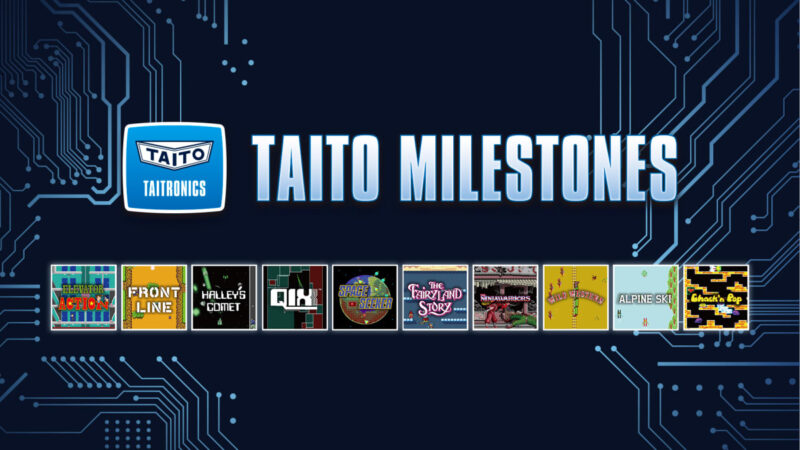
Taito has released many amazing arcade games over the years, and a number have made their way to the arcade arcives lineup. Now Taito and ININ Games have teamed up to release Taito Milestones, a collection of many of these arcade games. Included are ten games that represent the early years of Taito and the work the developer did.
These games come with all the usual bells and whistles of the Arcade Archives lineup, including manuals, button mapping and difficulty selection. Of the games in this collection, two are not yet available separately, those being Chack’n Pop and Space Seeker, but all the others can be purchased on their own if they are of interest.
The Ninja Warriors
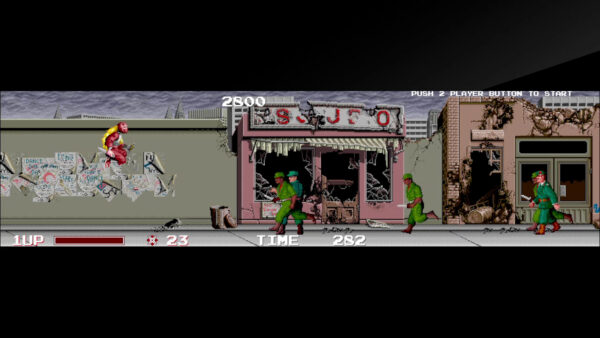
The Ninja Warriors is a game that is loved by many, but playing the game again makes it clear that there is a big case of nostalgia goggles involved with that love. The game was well known for using the same three-screen monitor display as Darius, and unlike Darius, it actually looks great even in handheld mode on Switch. The game still looks and sounds amazing, and has a soundtrack that has become legendary over the years, so presentation is not an issue.
The issue is the gameplay, which is somewhat similar to Shinobi, but much slower. The slow pace actually makes the game a chore to play through and takes away any enjoyment that could be had. There are better versions of the game out now, including the Ninja Saviors Once Again, which can be played on Switch right now and is a great experience.
Wild Western

Wild Western is a game that had ambition but is held back by its own awkward controls. The goal is to stop train robbers, and this is a lot easier said than done. Navigating the player character towards the robbers to attack is a sluggish process, and more often than not, you end up getting right in the way of the attacks.
The music is nice here, with a good rendition of Ghost Riders In The Sky, but that is not enough to save the game. This is a game that has shown its age and plays like a cumbersome version of Nintendo’s Sherrif, which itself is a chore to play. Some stuff is best left in the past, including this.
Space Seeker
Space Seeker is a weird one and a game that will confuse many people. The game is divided into three sections, a map section where you will interact with enemies, one where you take on enemy air forces and one where you are attacking enemy mobile fortresses. Each section plays like a different game, and sadly these sections do not meld together well.
The map section will throw many off at first, especially with how it is navigated, so checking the in-game manual is recommended. Attacking enemy air forces is done from a first-person perspective and sees you trying to shoot down aircraft. It is a simple process but the transition can throw people off, especially with gameplay that is lacking.
The mobile fortress segments play like a side-scrolling shooter and seem to be the best segments but that is not saying much. None of this game really fits and it feels like multiple projects slapped together, and burdened with unresponsive controls and subpar sound. Another game that just is a mess.
Chack’n Pop

A platform-style game that sees you control a small yellow creature named Chack’n, Chack’n Pop will instantly call to mind the latter title Bubble Bobble. Indeed, Chack’n Pop is a sort of predecessor to that game, but the ideas had not been fully fleshed out just yet. In this title, the objective is to retrieve hearts from a cave while avoiding the enemies within, which seems simple enough.
Chack’n has the ability to deploy bombs to kill the enemies and can walk on ceilings and floors but not walls. There is the ability to extend Chack’n’s legs, however, which can let you access areas that are obstructed otherwise. Chack’n must also avoid enemies that hatch from eggs in the level, as they can be a nasty surprise.
Chack’n Pop feels like a game that had so much potential but the final result just was not there. Some of the ideas would be explored in later games such as the aforementioned Bubble Bobble, but that game also took influence from another title in this collection.
Halley’s Comet
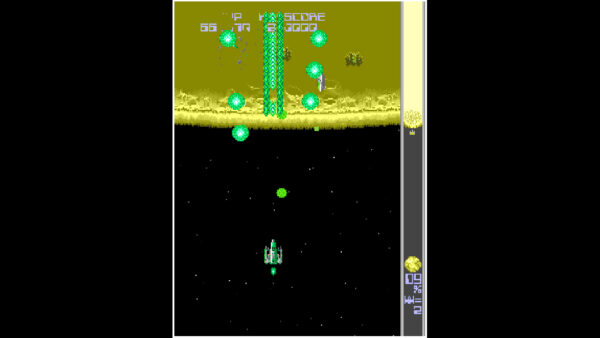
The only pure shmup in the collection, Halley’s Comet is just okay. It is not a bad game or anything, but it comes off as a Galaga clone more than anything else. The game sees you trying to shoot down comets, and while it has responsive controls and some decent sound, there is just nothing to make this game stand out.
I wish I could say more, but the game didn’t disappoint or impress, for a shmup it was just kind of there. Taito made much more impressive shmups before and after, so this one feels less interesting as a result.
Front Line
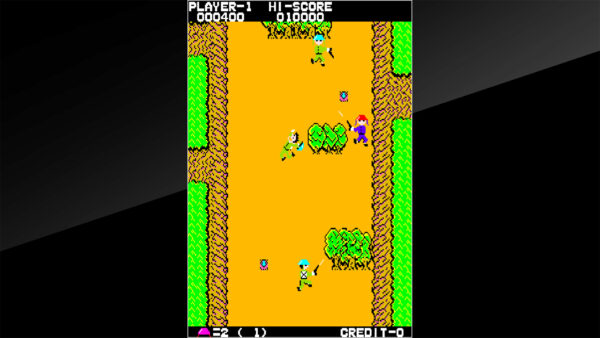
In one of the first overhead run ‘n gun games, it was clear the genre had to start somewhere. The game sees you play as a soldier armed with a pistol and grenades who is charged with breaking into an enemy fort and destroying it. As you get further along, there are other elements introduced such as taking control of a tank, but while this all sounds good, the gameplay is very rough.
It is important to remember that as one of the first of the genre, the gameplay had yet to be the polished run ‘n gun experiences we would know later, but this is a game worth checking out to see how early entries in this style played. However, aside from a look as a curiosity, Front Line doesn’t have much to offer and the high difficulty will turn off many.
Qix

Qix is a puzzle game that requires some thought and trial to understand at first. You control a diamond-shaped marker that moves along the edges of the puzzle field and must hold down one of the draw buttons to draw a line and claim territory in order to create a closed shape. Once you have some area captured and claimed, it is filled with colour and you are awarded points.
There is a fast draw button and a slow draw button and the latter will award double points, but you must be careful to avoid Qix. Qix is a constantly moving geometric shape that, while not actively seeking out the player, will cost a life if it collides with you. The result is a puzzle game that is still remarkably fresh decades later and Randy and Sandy Pfeiffer who created this game managed to create an artistic masterpiece that holds up well.
Alpine Ski

Alpine Ski is a simple game, but sometimes those are the best games. The goal is to ski down a mountain and dodge obstacles, while navigating to get the most points possible, which makes for a good experience. The game brings to mind well-loved games like Ski Free, and other early skiing games, and there is something basic yet addictive because of it.
Alpine Ski has issues of course, as some of the courses are way too awkward to navigate. The difference between this and the games in the collection with control issues is that the controls actually feel responsive here. Take the time to get to learn the game, and it becomes easier to play and something you will want to keep playing. This is one game that definitely stood the test of time.
The Fairyland Story
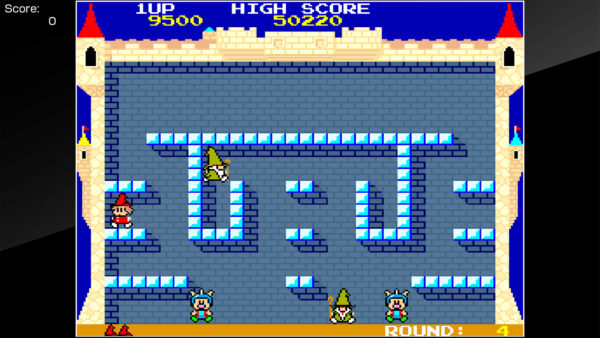
A game that has been criticized a lot as lacking by many, The Fairyland Story actually feels like a good game when it was played for this review. You play as a witch who must turn enemies into food and then dispose of the food to advance and the gameplay is actually rather addictive There are some issues with enemy placement of course, but nothing too serious.
In many ways, The Fairland Story feels like it was the better predecessor to Bubble Bobble, and polished up what Chack’n Pop tried to accomplish. The visuals are cartoonish and stand out, and there is some good music as well, making replaying the game a welcome experience. This is a game that helped pave the way for a masterpiece later, but it still stands in its own right.
Elevator Action
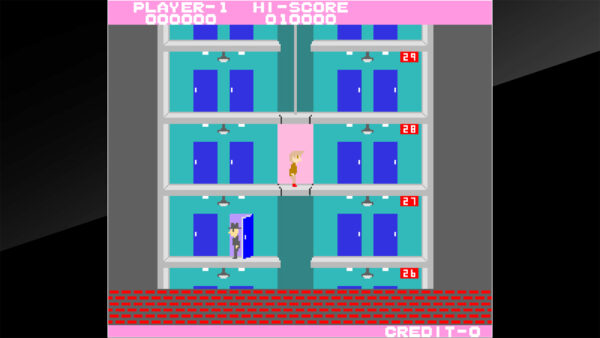
Another well-known game, this title actually lives up to the hype. A single-screen platformer, Elevator Action sees you break into a building to recover secret documents from marked rooms and then escape. There are multiple floors in the building, however, and you must go into the correct rooms to get the documents and then make your way down.
This seems easy, but there are numerous guards waiting to stop you, and part of the challenge is knowing when to go and when to attack. Along with that, the buildings have other hurdles including light-out sections that will obscure enemies and obstacles, and time limits for completing the mission. Yet Elevator Action never feels cumbersome, and instead comes off as the innovation the single-screen platformer desperately needed after Donkey Kong.
The game is just as playable now as it was back when it was released, and the charm is still there. Elevator Action remains a must-play game, and even with a minimalist feel for the art and music, there is something special here. With a combination of skill and coordination, you will come to love Elevator Action as many others did.
Conclusion
There is a wide variety of genres represented here, but some big names are missing beyond just classics like the Space Invaders series which has its own collection. Games like The New Zealand Story, and Bubble Bobble would have been great fit here, or even the laserdisc game Time Gal, which has been ported in the past. There is also no real museum mode for learning more about the games and that feels odd for a collection celebrating Taito.
In the end, Taito Milestones is a mixed bag as many of the games are available separately, and not all of them are worth checking out. The ones that are worth checking out are very good, but Taito Milestones does not do much to justify the price. It all comes down to how much Taito games appeal to you and that is a personal choice factor.
Disclaimer: A review key was provided

